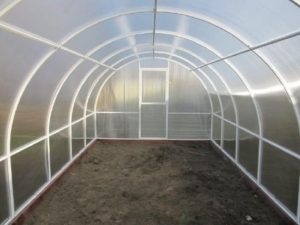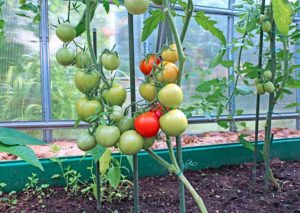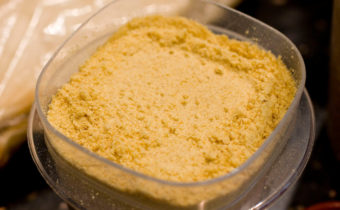Ways to heat a greenhouse in winter
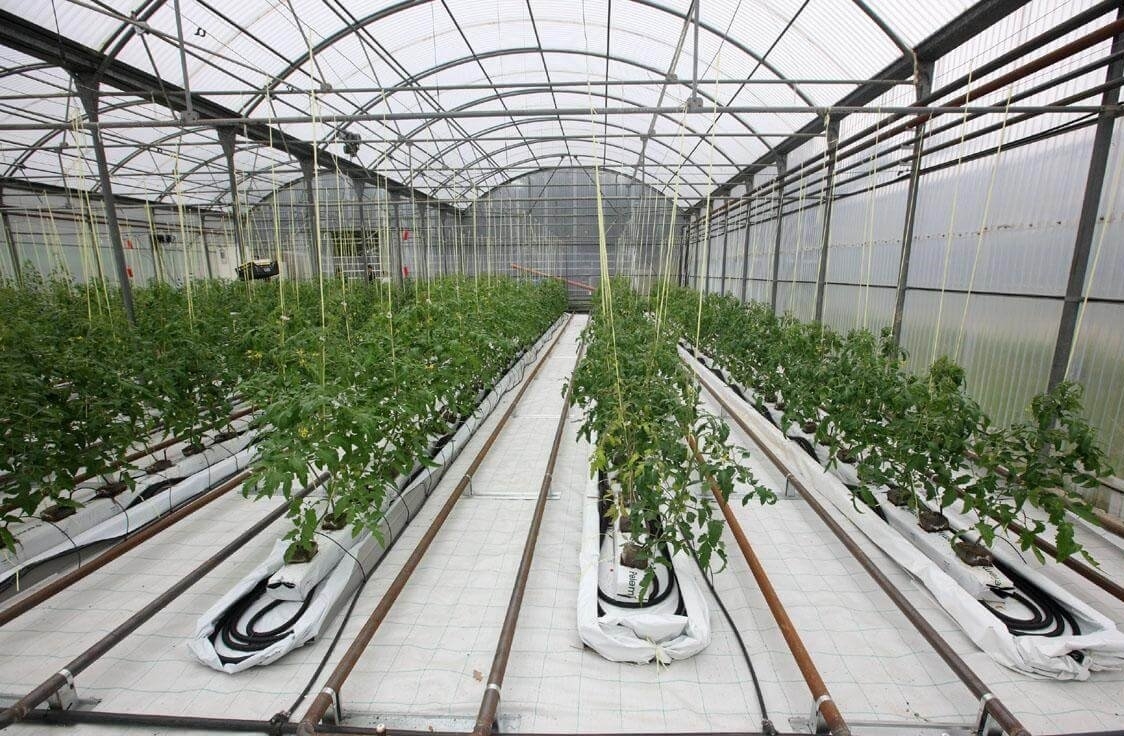
Winter greenhouse - aerobatics in the biography of any gardener. If a person knows how to grow vegetables in winter, he is rightly called a professional in this field. To build a winter greenhouse is half the battle. It is necessary to provide options for its heating - in cases of severe frost and sudden cooling. There are many ways of arranging heating for a greenhouse. The choice of heating system depends on the skills and skills of the master.
Efficient winter greenhouse design
Winter greenhouses differ from light greenhouses by the following criteria:
- functionality;
- location in the ground;
- type of architectural structure;
- used building materials;
- view of the heating system.
Winter buildings are multifunctional. They grow not only ordinary vegetables, mushrooms, flowers and herbs. In the winter greenhouse can grow citrus and exotic crops. Arrangement of the greenhouse depends on what types of plants will prefer the gardener.
Heated greenhouse can be installed in different ways on the ground. It is deepened into the ground or built on the surface. The architectural structure of the structure is arched, horizontal, two- or tri-slope. There are also sloping roofs of greenhouses.
For the construction of insulated buildings used brick, wood, metal frames or the base of PVC pipes. Greenhouse glazed or sheathed sheets polycarbonate. Sometimes you can find combined designs. You can heat the room in different ways: gas heating, pipes laid under the ground, a home-made stove, biological fuel.
Warm greenhouses are installed on the upper floors of private houses or garages.
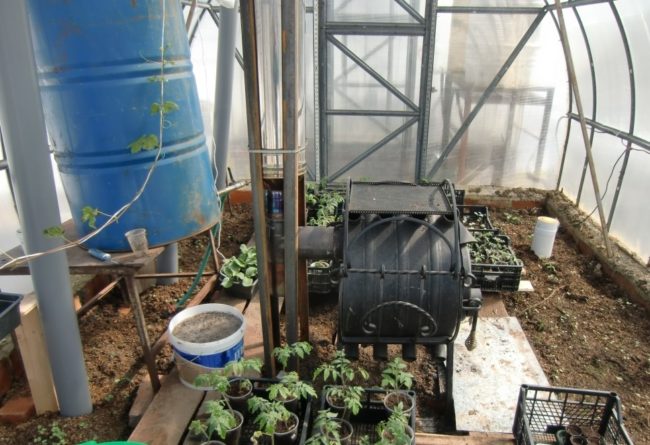
How to reduce heat loss in winter
In winter there is always the risk of heat loss. Even in a reliable structure, there is a loss of heat. At the same time, a lamp for heating, a solar collector or a furnace are working properly. We need to find out the cause and eliminate it.
Most often, heat loss occurs when one of the polycarbonate sheets is damaged. Small cracks may form on it. Initially, they are almost not visible, but over time they increase due to temperature drops. The owner must carefully inspect the entire greenhouse and repair damage. Glass paneling can also crack. Cold penetrates corners with insufficient insulation or through damaged beams.
Loss of heat is due to the fact that the service life has expired foundation. The base of the tree becomes unusable five years after installation. If, after inspecting the dome, it turned out that it was not damaged, it would be necessary to open the base. When trouble happens in winter, the foundation is warmed, and in the spring they start overhauling.
Losses of heat occur due to severe frosts. In this case, the greenhouse is immediately warmed. The design of polycarbonate is convenient in that its dome can always be covered with another layer of material. Sudden heat loss can be prevented. It is necessary to carry out maintenance work every six months.
Sometimes gardeners make a big mistake.They change the temperature of the heating greenhouse. Excessive hot air dries the ground, and the roots of the plants can overheat. It is best to insulate the structure or repair it.
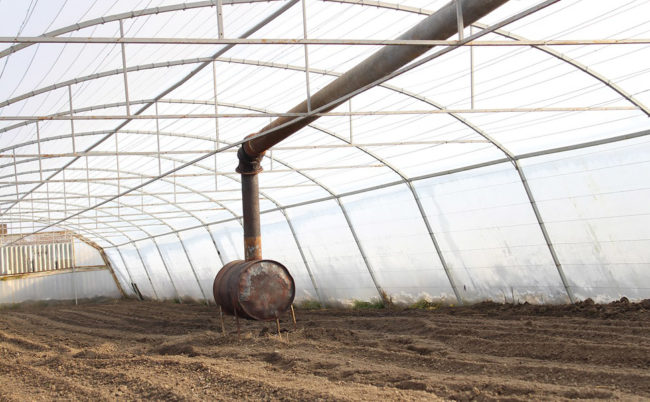
Types of heating greenhouses and methods for their manufacture
The heating system for winter greenhouses is:
- natural (use natural resources);
- artificial (apply technical means).
It is convenient and economical to use natural resources, but they are not always enough for full heating. Technical means with the use of gas, water and electricity successfully combined with natural methods. If you have the desire and skills, you can equip greenhouse heating yourself.
Natural heating
The natural heating of greenhouses include solar energy and biofuel.
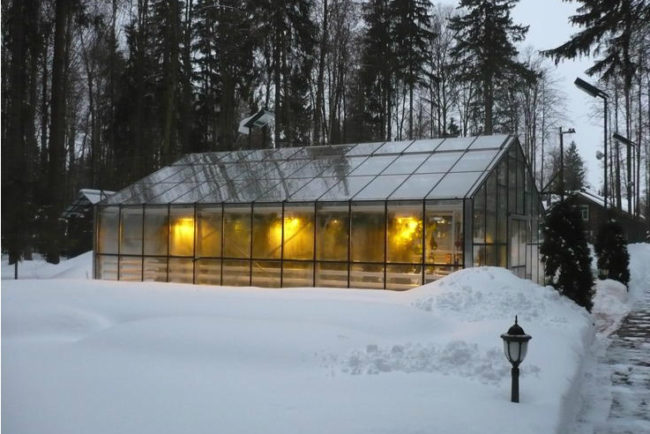
Energy of sun
Solar heating is a reliable and free way of heating. To implement it, it is necessary to install a greenhouse in the place of maximum sun illumination. The material with which the structure is covered must have a greenhouse effect. Polycarbonate sheets create a greenhouse effect no worse than glass cladding. They have a cellular structure. The cells retain air, creating an insulating layer.
The energy of the Sun will warm the greenhouse even better if the design is correctly oriented. Best of all, when the ridge of the roof is oriented along a conventional line from east to west. Arched greenhouse accumulates more solar energy than other structures.
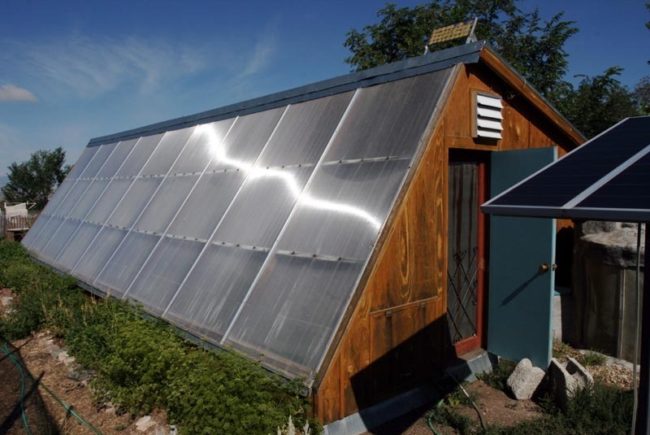
Solar heating is one of the best natural ways to generate heat. It has the only drawback: in winter, the sun heats up much weaker than in spring and summer. For full heating greenhouses need additional funds.
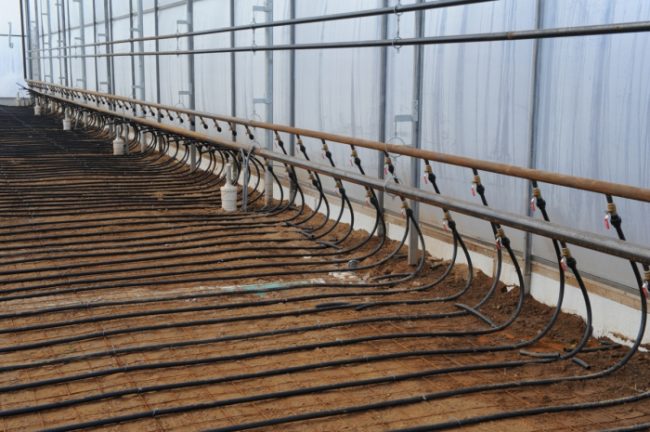
Biofuel
Biofuel is decomposed organic matter. Different types of manure are used as biofuels:
- horse;
- bovine;
- pork;
- litter of ducks, geese, rabbits.
Initially, the manure is mixed with straw. This increases fuel productivity. Depth of laying mass is 20 cm, thickness - 25 cm. After laying, activate the processes of mass decomposition. To do this, the land in the greenhouse watered. Biofuel available, it heats the soil, emitting carbon dioxide. Heating time - 10-120 days, with periodic mass updates.
The disadvantages of biofuels are the same as those of solar energy. It can not fully heat the greenhouse during the cold season. Experienced gardeners understand that without artificial heating they can not do.
The best manure for biofuels is traditionally considered horse.
Artificial heating
Technical heating system is used at any time of the year. There are many varieties of it. The principle of operation of each system depends on the method of heating and the units used:
- heating boilers;
- stoves;
- solar panels;
- water, air, gas heating;
- heat guns;
- electrical appliances (including infrared heating);
- cable installation;
- improvised means, low-cost and emergency ways.
Boilers for heating greenhouses
Occasionally, solid fuel boilers are used. Solid fuels are sawdust, firewood and special briquettes. Such a system requires constant maintenance of fire and is not suitable for questioning. It is better to purchase a gas boiler. It runs on gas, which is supplied in cylinders or on natural fuel. There are also boilers that operate on the electrical network.
Installation of the boiler requires serious skills from the master. To install such a system is better to invite a specialist.
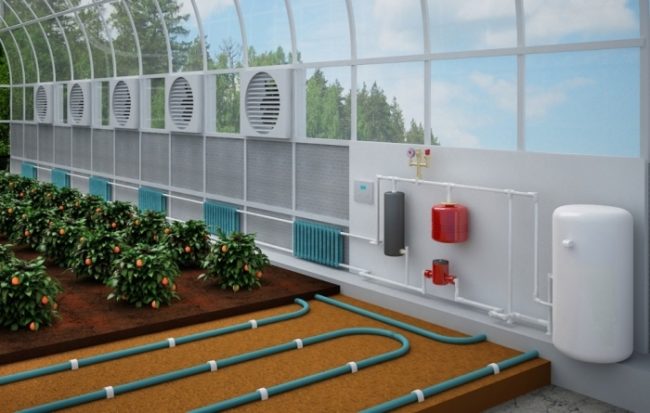
Stove heating
Oven heating will cost the owner cheaper than electric heating. A simple greenhouse stove can be made by hand. The model has a hog or chimney with a horizontal outlet. The principle of making the stove looks like this:
- lay out a brick firebox in the greenhouse vestibule;
- lay out the chimney (under the ridges or along the length of the structure);
- bring the chimney in the opposite direction (for the release of carbon monoxide).
After installation of the stove, there should be a gap of about 25 cm between the end face and the furnace.
A good stove can be made from an ordinary iron barrel:
- paint the barrel from the inside with two layers of paint;
- make several holes in it (chimney, furnace, faucet and tank);
- cook the stove and insert it into the barrel;
- remove the chimney;
- put a 5 meter pipe outside;
- install a 20-liter expansion tank on the barrel (it can be welded from ordinary iron sheets);
- make heating from metal profile 40x20x1.5;
- lay the pipes in the soil, keeping a distance of 1.2m.
It is necessary that water is constantly circulating in a self-made system. For this you need to buy a special pump. The stove is heated using any firewood.
To control the temperature in the greenhouse with a stove, you can use an electronic sensor. The sensor is installed in the greenhouse, and the board - in the living room.
Home-made stove is suitable for heating, if the owners know how to handle it correctly and control the temperature in a timely manner. Such a unit will cost inexpensive, but requires a lot of work and hassle.
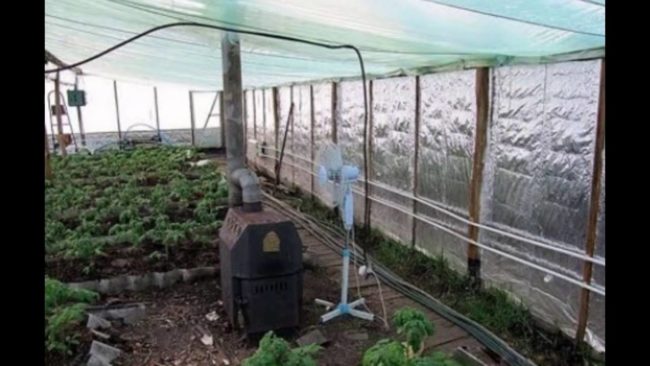
Solar panels
To install the solar system, choose one or more solar panels. They accumulate the energy of the sun. Thanks to this, it is possible to save energy and be less dependent on the central power grids. In addition to the panels you need to purchase an inverter. The inverter will convert DC to AC. Also, the system requires a reliable battery. It accumulates energy "in reserve". A controller is required for proper battery operation, and a relay controls temperature readings.
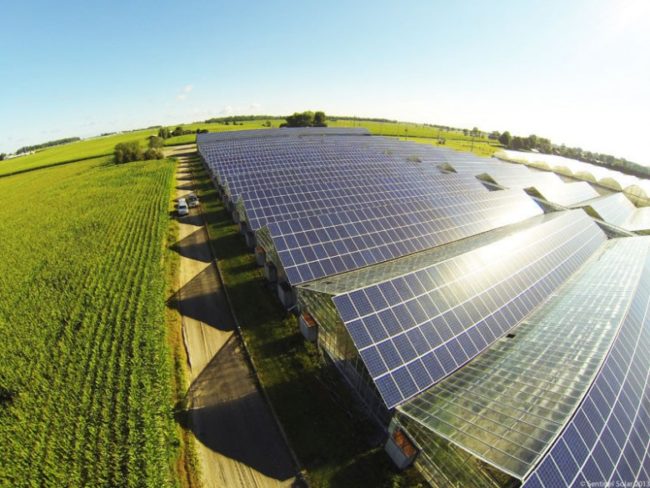
You can install the solar system yourself, but this requires serious financial investments. Solar panels will not pay off immediately. It is better not to install them in cold and damp regions: bad weather adversely affects their performance. If solar activity in the region is enough, you can think about installing a solar system.
Water heating
For the equipment of a water heating system, you will need hot water pipes and a large boiler. The system warms not only the air, but also the ground. The decisive role in installing such a heating is played by the location of the extensive pipe system and the type of boiler selected for heating.
You can embed the pipe into the central heating system. This method is effective if the distance between the house and the greenhouse is not more than 10 meters. With a greater distance heat loss can not be avoided, so you have to warm the pipeline.
Sidebar do only after receiving official permission.
Water heating is an efficient method, but conducting it involves obtaining official permission to insert a pipe. To get such a document is not always possible.
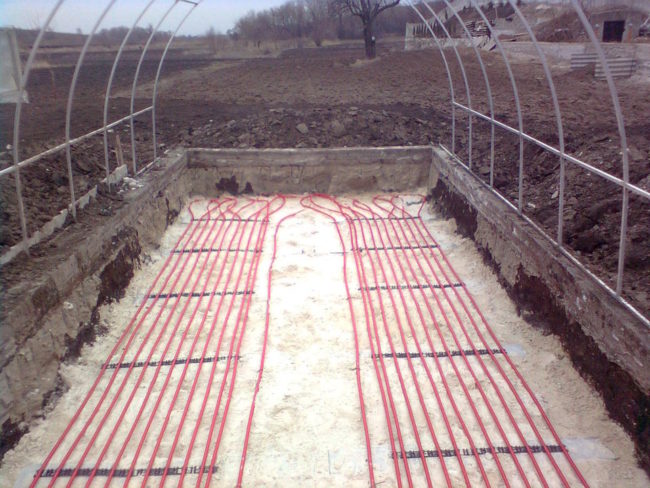
Air heating
A simple air heating system consists of a plastic hose and a heat storage unit (generator). Air enters the perforated sleeve. Due to the perforation of the sleeve, it is distributed throughout the greenhouse. The design is simple: its installation does not require a lot of money, but it cannot be called widespread. The reasons are as follows:
- sleeve does not warm the ground. It is at the top because hot air can burn the plants;
- humidity should always be controlled: steam dries the earth and air;
- the air cools rapidly when it stops heating.
Air heating greenhouses - not the best way to heat a greenhouse. Unlike water, the air cools rapidly, and the perforated sleeve takes up a lot of space in the room. This will lead to irrational use of space.
To heat the greenhouse with air it is better to use heat fans. They are compact, quickly heat the room. In the heat of their use as intended - for ventilation and ventilation.Heat fan suitable for a small greenhouse. In its application take into account the cost of electricity.
It is necessary to monitor the work of the fan so that it does not burn the plants with hot air flow.
Gas system
The operation of the gas system looks like this: the heater is installed and the gas is burned in the greenhouse. For the greenhouse medium-sized gas cylinders are sufficient; for an industrial model, a connection to a central supply source will be required. The gas burns and the plants get the carbon dioxide they need. To maintain an optimal microclimate inside a greenhouse with gas heating, ventilation must be provided.
Gas heating set only professional masters.
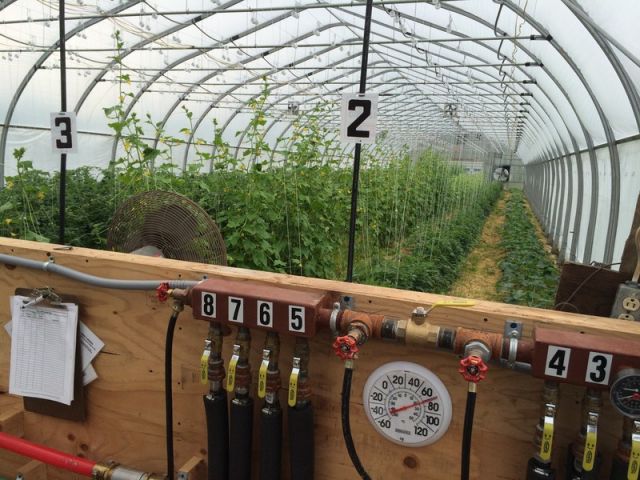
Heat gun
Gas heat gun - one of the best methods for heating a greenhouse in the cold. For its self-manufacturing need experience. The pipes are sealed with an auto-aerial and set threads on them. Connect the gun flexible liner. It can be made from a perforated metal hose. Flexible eyeliner allows you to adjust hot air flow. The gun is turned in any direction.
For the manufacture of the body you need to take a metal pipe and fasten its edges with bolts. Then a small pipe saw grinder. A small tube is needed for gas. It is necessary to make a hole in it and expand it to 5 mm. The body is extended with a metal disk (disk diameter is 8 cm). It is fixed under the gas burner to improve heat transfer. 8 holes are drilled in the disk. The diameter of each of them is 1 cm.
After making the body of the gun make a yoke. It is designed to fix the heat exchanger. For the heat exchanger you will need a metal pipe. Its diameter is 8 cm, and the walls should not be too thick. The butt end is welded to the wall in which the hole is drilled. This hole is needed for the extension cord coming from the burner. Clamp is fixed with bolts.
All parts burner assemble. After that, the heat exchanger is equipped with a fan. In the exchanger drill hole. A portion of a tube with a diameter of 80 mm is attached to it. Through the tube and the hole, the heated air will flow out of the fan. The same ventilation structure is installed on the other end of the exchanger. It is needed to transfer hot air to a cold room. As a source of energy for the fan using electricity or battery.
It remains to drill a few holes for ease of igniting gas. As a stand for the gun, you can use an iron frame made of reinforcement.
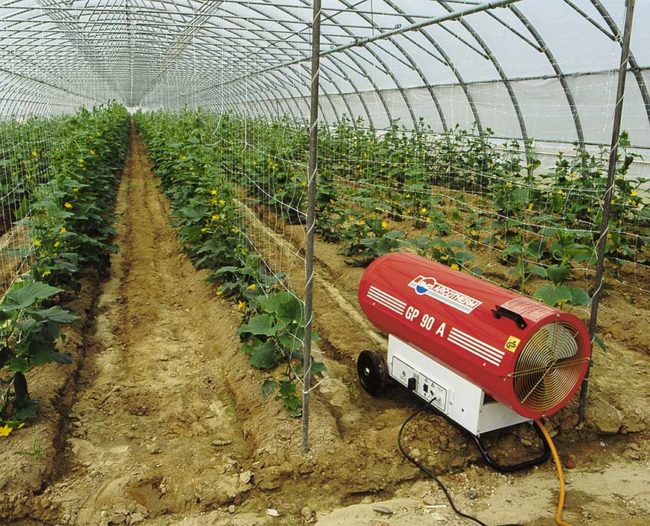
Electric heating greenhouses
Most often, greenhouses are heated by convectors, heaters or radiators. In order to save electricity, you can equip the greenhouse with an infrared heater.
Advantages of infrared heating:
- it acts directionally, warming the earth;
- the greenhouse can be zoned by moving the IR lamps;
- ease of installation:
- comfortable temperature control.
When infrared heating air masses do not move with such force as when using other units. This has a beneficial effect on sensitive plant species. If the IR panels are installed in the form of chess, there will be no unheated zones in the greenhouse.
There are practically no drawbacks to infrared heaters.
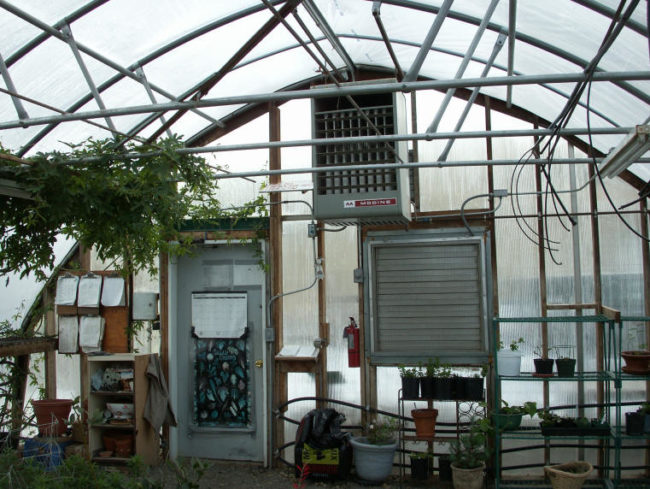
Cable heating greenhouses
The laying of the heating cable begins in the process of building a greenhouse. Cable heating greenhouses regulates the temperature of the earth. This is important for plants, because in the process of growth they need a different level of heat. Most often, gardeners use a floor heating system. It is easy to operate, and the temperature is controlled automatically. Another plus of such a system is the uniform distribution of heat.
In the process of laying the cable, remove the turf and put sand in its place. The cable is placed into this sand layer, having previously laid it on the thermal insulation layer.The method is ideal for plants, but the cost of electricity will be very large.
Alternatively, you can use the inverter air conditioner.
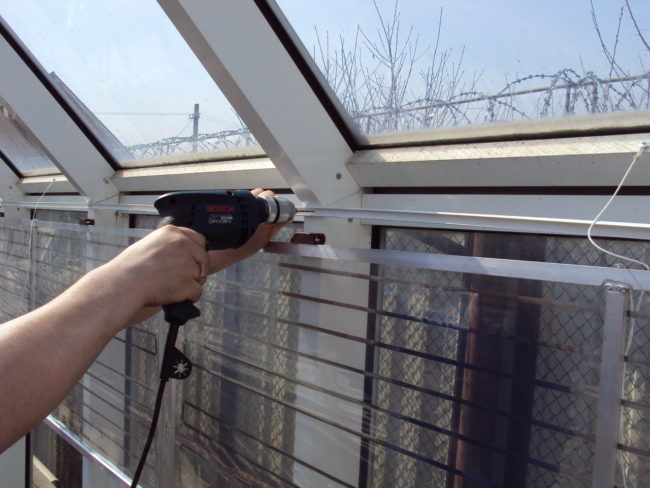
Low cost and effective ways
One of the popular "homemade" is a stove-stove. It is affordable, and anyone can easily assemble it. Its disadvantage is that it takes a lot of fuel, and you need to lay firewood all the time. Instead of a stove it is better to put a pyrolysis stove. At cost, it will cost a little more, but it will have less fuel consumption. Laying firewood in a pyrolysis oven should be 1-2 times a day. The bottom line is that the wood in the pyrolysis oven does not burn through, but gradually smolder. When smoldering fuel emits a lot of heat energy.
Film heater is a simple way to heat a small greenhouse. It is necessary to dig a hole 15 cm deep and cover the soil with an insulating layer. As the heat insulator used polystyrene. It is covered with polyethylene and sand is placed on top. It should be wet and coarse. The device gradually accumulates solar energy, maintaining the optimum temperature level in the greenhouse. Film heater is used up to -10C.
As emergency heating greenhouses used improvised means. They can save plants in the event of a sudden cold snap or a failure of the existing heating system. Several porous bricks are impregnated with kerosene and placed in a metal container. It is placed near the greenhouse. The heated air rises along the diverted pipe and creates a curtain from the cold.
In the case of a cold snap, you can use plastic bottles filled with water. They are placed throughout the greenhouse, without closing the covers. At night, the water, heated by the rays of the sun, gives off heat to the plants. Moisture evaporation also occurs.
Useful and romantic is the candle heating method. On the beds you need to put a few arcs and cover them with spunbond. Inside the design put candles under the metal caps. The cap protects the room from the flame, accumulates heat and gives it to plants.
There are many ways of heating greenhouses and greenhouses. Many of them require financial investments, but if you show ingenuity, you can make a simple heating system yourself.

